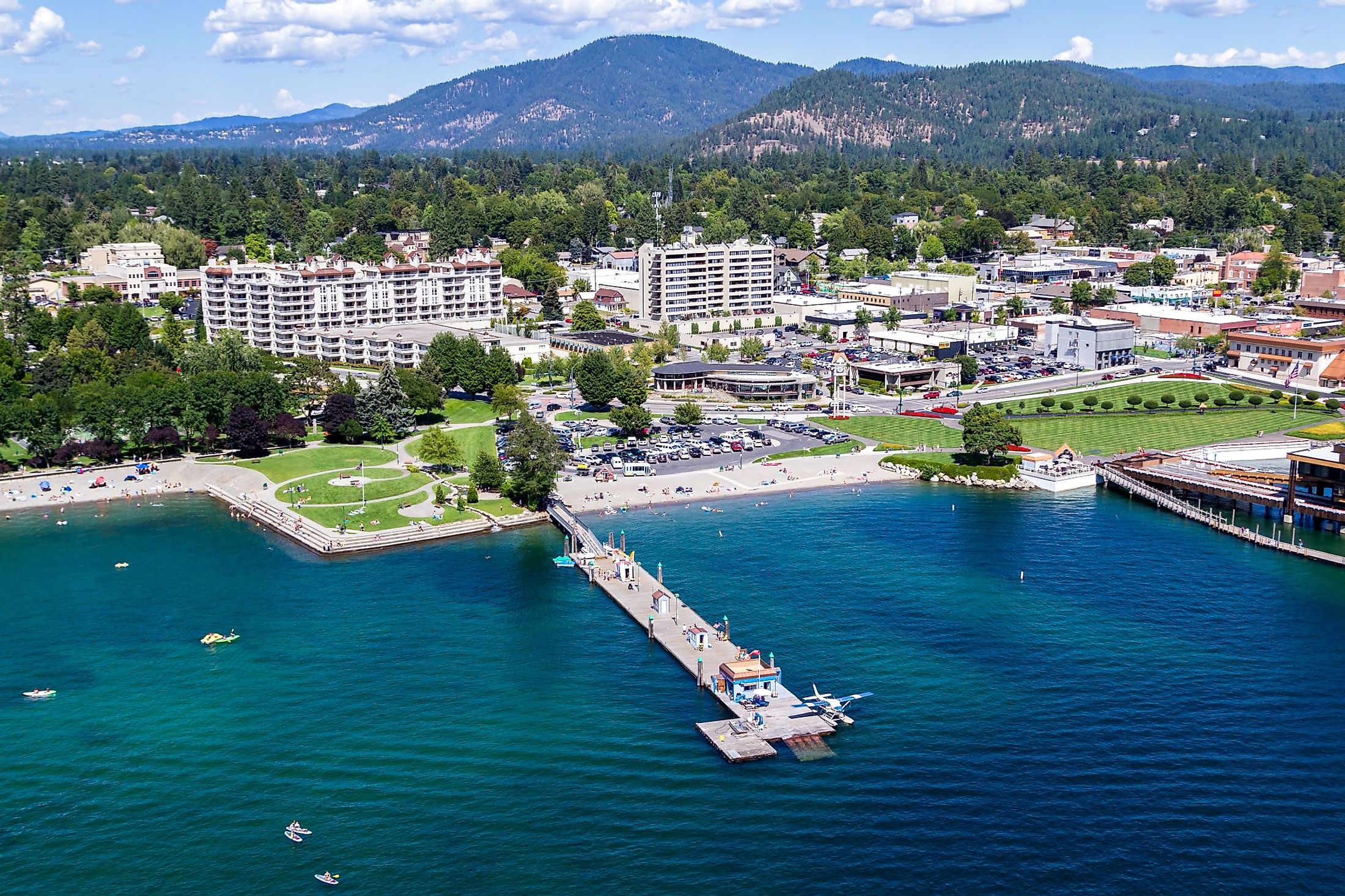
Lake Coeur d'Alene, Idaho
Lake Coeur d'Alene is a natural lake situated in Kootenai County in the northern portion of the US State of Idaho. The name Coeur d'Alene is a French word that translates as "heart of awl." The early French traders coined the term for the indigenous Coeur d'Alene people in reference to their habit of driving a hard bargain. The lake and the surrounding city have thus been named after the indigenous Coeur d'Alene people. This natural lake runs through a resort area popular for its views of forested mountains. Tourism has become an important industry in the region, besides other recreational activities such as fishing, boating, camping, and hunting.
Geography Of Lake Coeur d'Alene
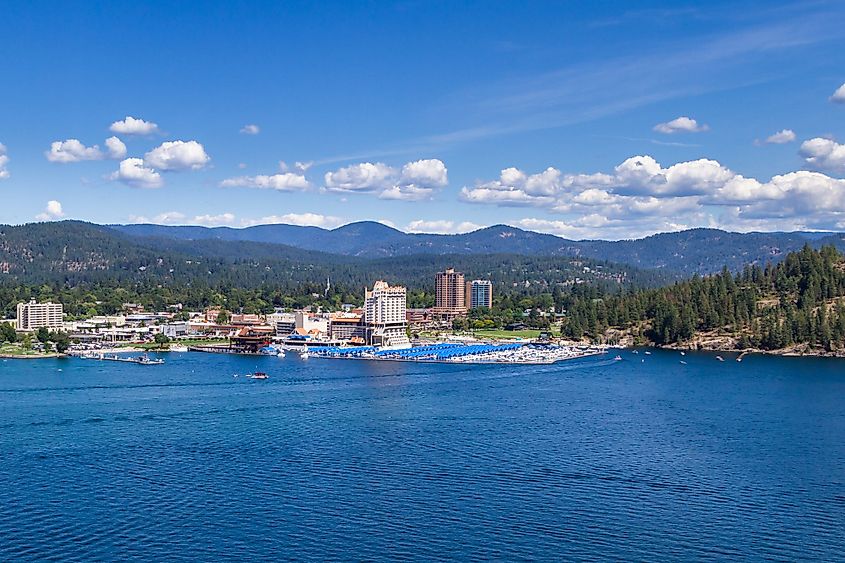
Lake Coeur d'Alene covers a surface area of 129 sq. km and has a maximum length of 40 km, ranging from 1.6 to 4.8 km in width. The lake has an average depth of 37 m and reaches a maximum depth of 67 m. With a shoreline of over 175 km, the lake stretches through a region of the Coeur d'Alene Mountains, which forms a part of the Northern Rocky Mountains. The Coeur d'Alene Lake is situated at the heart of the Idaho Panhandle National Forest, which also incorporates the Kaniksu, Coeur d'Alene, and St. Joe national forests. The lake lies about 40 km east of Spokane, Washington, with Coeur d'Alene city located at its northern end and the Coeur d'Alene Indian Reservation incorporating the southernmost third of the lake. Lake Coeur d'Alene is fed by the St. Joe and Coeur d'Alene rivers. It is impounded and controlled by a Post Falls Dam, located on the Spokane River about 14 km downriver from the lake.
Climate Of Lake Coeur d'Alene
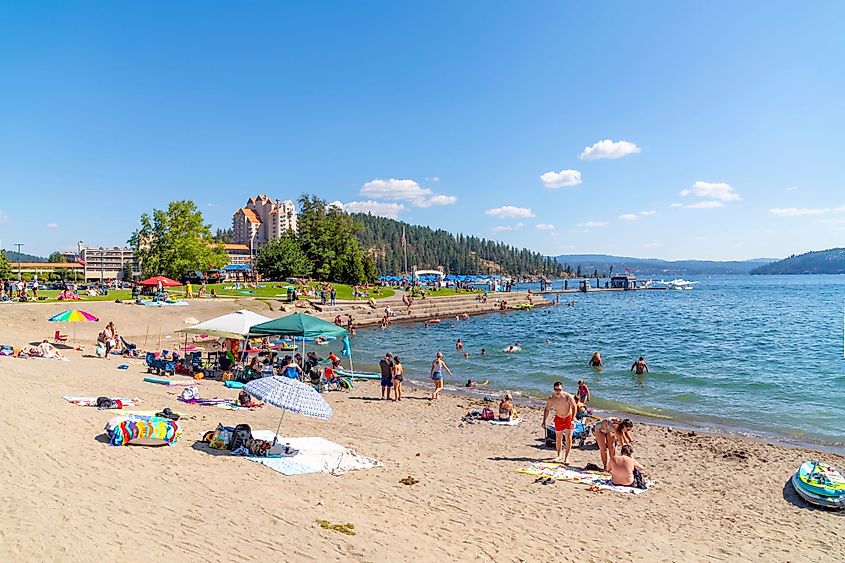
As per the Koppen Climate Classification, the lake and the area around it experience a continental climate with dry, hot summers and cold, moist winters. December is the coldest and cloudiest month of the year, where average highs only reach -0.4 °C and lows dip to -6.2 °C. Snow is common from September through May, with snowfall on 71.6 days in an average year and accumulations of 1429 mm. There are an average of just under 140 rain days annually, accumulating 564 mm of precipitation. January is the rainiest month, with an average of 11.5 rainfall days. July is the warmest month, with average highs of 27.7 °C and lows of 10.3 °C.
Geology Of Lake Coeur d'Alene
The bedrock dates from the Precambrian era, incorporating parts of the Idaho Batholith, a geological formation that consists of granite and other rocks dating from the Cretaceous and Paleogene eras. The mountains were formed when the force of the Farallon plate raised the Idaho Batholith underneath it about several million years ago. Over time, erosion and other forces have created the unique profile of the Coeur d’Alene mountain range, with sediment deposited to the east along with runoff.
The Coeur d'Alene Lake was formed by glaciers. It is one of over 55 glacial lakes in the Coeur d'Alene mountain range, left over from the last Ice Age. The lake's levels fluctuate over 2 m most of the time due to natural forces such as rainfall and snowmelt. Avista Utilities adjusts the level at times via the Post Falls Dam according to licensing regulations of the Federal Energy Regulatory Commission.
Ecology Of Lake Coeur d'Alene
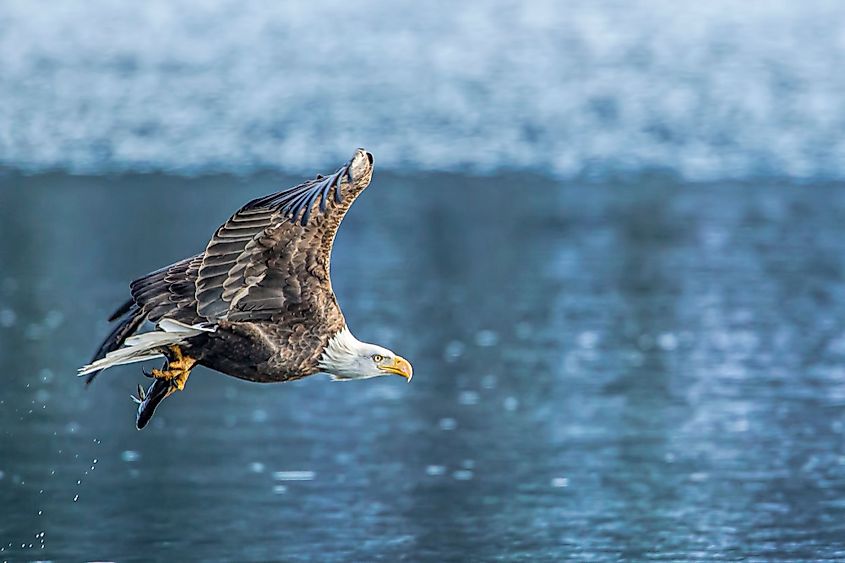
The lake houses a variety of fish species, both those that are native to its waters and migrating species. There are several species of trout (including the protected bull trout), northern pike, smallmouth and largemouth bass, yellow perch, and Chinook salmon, among others. Osprey and other water birds, such as ducks, geese, cranes, and others, feed on the lake's fish stocks. The lake's shores and adjacent forests support many other birds, including bald eagles, grouse, partridge, quail, pheasant, and turkey. The woods and mountains that surround the lake are home to many species of animals, like rabbits, squirrels, bobcats, coyotes, wolves, moose, mountain goats, and bighorn sheep. Hunting is popular in the area, including large game such as elk, black bear, and mountain lions.
Brief History Of Lake Coeur d'Alene
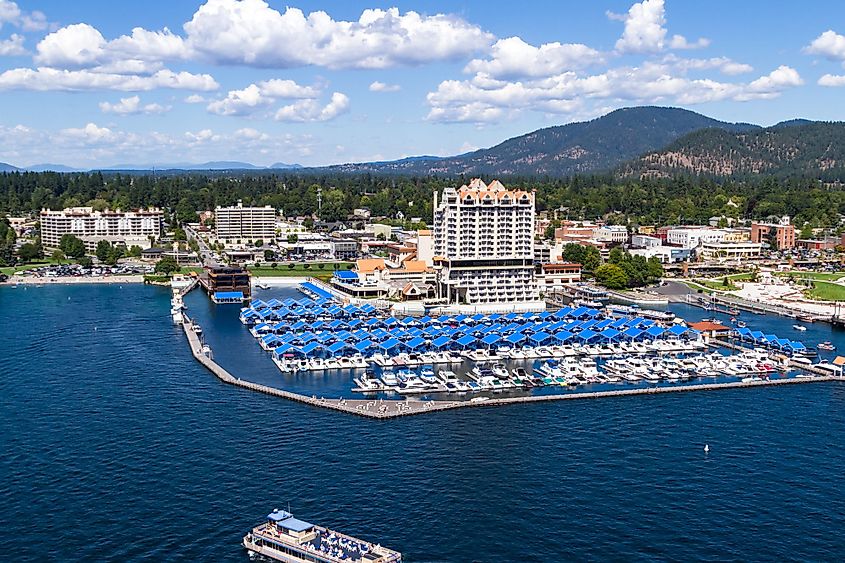
The shores of Lake Coeur d'Alene were home to Native Americans for several years before the arrival of European settlers, drawn by the abundance of fresh water, fish, and game in the surrounding forests. The region's first European visitors were linked to the British Northwest Fur Trading Company, which began establishing trading posts in the region in the early 19th century. Native Americans considered the lake their own, and at one time, the Coeur d'Alene Tribe (called Schitsu'umsh in the indigenous language) owned the entire body of water. As the result of an executive order issued by Ulysses S. Grant in 1873, the southernmost third of the lake belongs to the Coeur d'Alene Tribe. The Coeur d'Alene Tribe's water rights to the Coeur d'Alene-Spokane River Basin have been upheld by the Supreme Court.
Fort Coeur d'Alene was established on the lake's northern shores in 1878 by General William T. Sherman, and a small settlement began to form around it. This settlement eventually became the city of Coeur d'Alene. The fort's name was later changed to Fort Sherman. Three of the original fort buildings still exist within what is now the North Idaho College grounds. Lead and silver were discovered in the area in 1883, and the railroad followed in 1886, spurring settlement around the lake. In 1906, the Post Falls Dam was completed, raising the lake's level. Ten private investors originally funded the dam project, which was eventually transferred to Avista Utilities.
The city became a transfer point for mines in the nearby Silver Valley and smelters through to the late 19th century. The lake was home to a busy commercial steamboat trade in the early 20th century. The development of the trade in timber caused another population boom at the same time. The city of Coeur d'Alene became the County seat in 1908. Tourism began to develop along with the arrival of the railroads and steamboats in the late 19th century and continues in the modern era in the form of fishing, boating, camping, and hunting.











